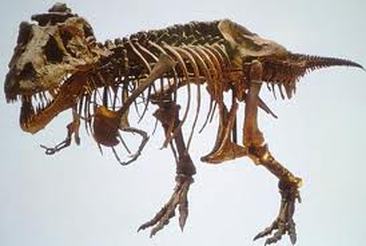
Predator prey relationships and the hardware has been happening since tens of millions of years ago. Not infrequently there is prey 'lucky' to escape from predator attacks are very aggressive.
That fact is revealed from analysis of fossil Edmontosaurus annectens by researchers and paleontologists recently.
Bruce Rothschild, professor of medicine at the University of Kansas along with Robert DePalma, paleontologist at the Palm Beach Museum of Natural History, Florida found a scar on the head dinosaur that lived in the 65 to 67 million years ago.
The wound imprint area of 12 x 14 cm on the upper right eye dinosaur that resembles a duck's head shape.
"(Luka) so tough" Rothschild said as quoted by National Geographic, Thursday (28/02/2013). According to him, looked at the head wound is dinosaur old wounds and trauma that may be caused by a predator attack.
From the shape and size, the researchers suspect that the E. annectens was attacked by a Tyrannosaurus rex, but managed to escape.
There is a scar on the skin and bones. Investigators believe the two scars caused by the same attack. "The wound that was big enough for a scar caused by scratches or bites," said Rothschild.
Rothschild and colleagues quite confident with its findings. However, they acknowledged that he expected still to be proven.
Phil Bell, a paleontologist at Pipestone Creek Dinosaur Initiative of which was not involved in this study, expressed a different opinion. He said the relatively small size of the scar to be caused by a predator. He is more confident that the injuries caused by the accident.
Meanwhile, David Burnham, a paleontologist from the University of Kansas Biodiversity Institute said the dinosaur was probably attacked by a T rex.
Burnham argued, if the scar is indeed the attack T. rex, dinosaur he suspects managed to escape thanks to the help of other dinosaurs. E. annectens is a type of dinosaur that lived in groups.
Another hypothesis may be due to T. rex attack when it has not reached the age of majority and reach optimal size. "There's something 'envelop' the case that we do not know," he said.
Sources:
National Geographic News
That fact is revealed from analysis of fossil Edmontosaurus annectens by researchers and paleontologists recently.
Bruce Rothschild, professor of medicine at the University of Kansas along with Robert DePalma, paleontologist at the Palm Beach Museum of Natural History, Florida found a scar on the head dinosaur that lived in the 65 to 67 million years ago.
The wound imprint area of 12 x 14 cm on the upper right eye dinosaur that resembles a duck's head shape.
"(Luka) so tough" Rothschild said as quoted by National Geographic, Thursday (28/02/2013). According to him, looked at the head wound is dinosaur old wounds and trauma that may be caused by a predator attack.
From the shape and size, the researchers suspect that the E. annectens was attacked by a Tyrannosaurus rex, but managed to escape.
There is a scar on the skin and bones. Investigators believe the two scars caused by the same attack. "The wound that was big enough for a scar caused by scratches or bites," said Rothschild.
Rothschild and colleagues quite confident with its findings. However, they acknowledged that he expected still to be proven.
Phil Bell, a paleontologist at Pipestone Creek Dinosaur Initiative of which was not involved in this study, expressed a different opinion. He said the relatively small size of the scar to be caused by a predator. He is more confident that the injuries caused by the accident.
Meanwhile, David Burnham, a paleontologist from the University of Kansas Biodiversity Institute said the dinosaur was probably attacked by a T rex.
Burnham argued, if the scar is indeed the attack T. rex, dinosaur he suspects managed to escape thanks to the help of other dinosaurs. E. annectens is a type of dinosaur that lived in groups.
Another hypothesis may be due to T. rex attack when it has not reached the age of majority and reach optimal size. "There's something 'envelop' the case that we do not know," he said.
Sources:
National Geographic News
 RSS Feed
RSS Feed